Entity Module Mapping
Purpose
This document serves as a vital component of the Complete Solution Guide: ROCKEYE – Procurement Solution, focusing on providing a comprehensive Entity Module Map diagram for the ROCKEYE – Procurement System. Its primary aim is to visually delineate and clarify the diverse interactions and activities available to users within the system. The Entity Module Map diagram acts as a crucial aid in understanding the sequence of actions, relationships between different entities, and the overall functionality of the Procurement System from a user-centric viewpoint.
- Clarity in User Interactions: Illustrate the step-by-step process through which users engage with the Procurement System, offering a clear visual representation of the sequence of actions executed by users.
- Identification of User Roles: Define distinct user roles within the system, including Departmental User, Procurement Officer, Manager, Payable Officer, Vendor, while highlighting the specific activities associated with each role.
- Highlight System Features: Showcase the functionalities available to users, emphasizing key features such as requisition creation, supplier management, contract negotiation, and reporting to enhance understanding.
- Enhance User Training: Incorporate pathways and decision points addressing potential errors or exceptions that users may encounter. Clarify error-handling mechanisms and guide users on navigating such situations effectively.
Entity Module Map diagram
Departmental User
Role(s): Initiate requisitions and service confirmations seamlessly, ensuring timely approvals and budget adherence.
Responsibilities
- Initiate requisitions for goods or services needed by their department.
- Communicate with departmental needs effectively.
- Ensure accurate and detailed descriptions of requested items or services to their particular location.
- Collaborate with procurement officers to align requests with departmental needs.
- Approve requisitions as necessary, ensuring budget adherence and timely approvals.
Figure 1 depicts the Entity Module Map diagram of Departmental User
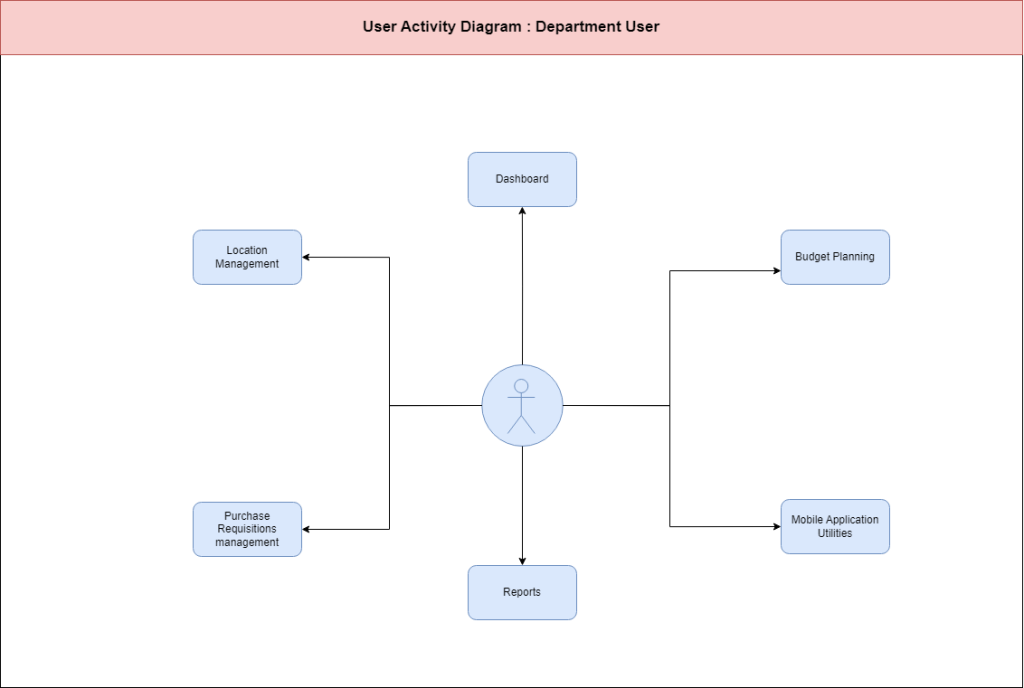
Figure 1
Procurement Officer
Role(s): Manages and requests RFP (Request for Proposal), RFQ (Request for Quotation), and purchase orders, aligning with departmental needs.
Responsibilities
- Manage and process requests for proposals (RFPs) and quotations (RFQs) from departmental users.
- Manage vendor relationships and performance based on that, ratings for a particular vendor and comparisons will be given to the procurement officer.
- Align procurement activities with departmental needs and budget constraints.
- Negotiate with vendors to secure favorable terms and pricing through email.
- Generate and issue purchase orders (POs) based on approved requisitions.
- Coordinate with vendors to ensure timely delivery of goods or services.
Figure 2 depicts the Entity Module Map diagram of the Procurement Officer
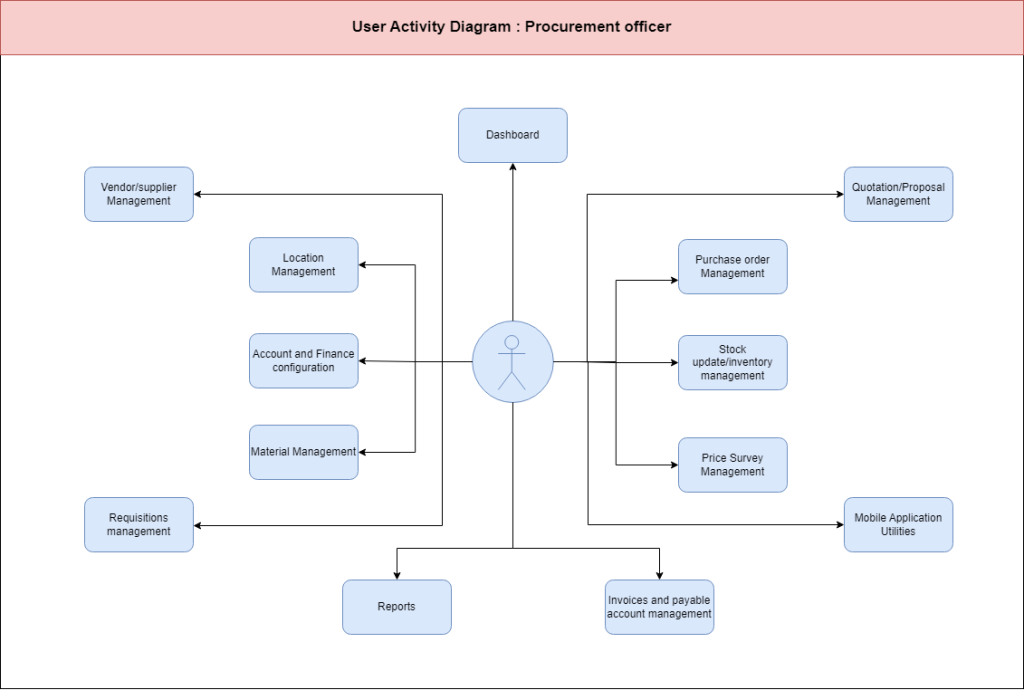
Figure 2
Manager
Role(s): Assess vendor proposals and pricing, facilitating informed decision-making and efficient procurement processes.
Responsibilities
- Assess vendor proposals and pricing to ensure alignment with organizational goals and budget.
- Provide guidance and direction to procurement officers regarding vendor selection for best goods / service.
- Approve purchase orders and contracts within delegated authority.
- Review and approve procurement decisions, particularly for high-value or critical purchases.
- Monitor procurement processes to ensure compliance with organizational policies and procedures.
Figure 3 depicts the Entity Module Map diagram of Manager
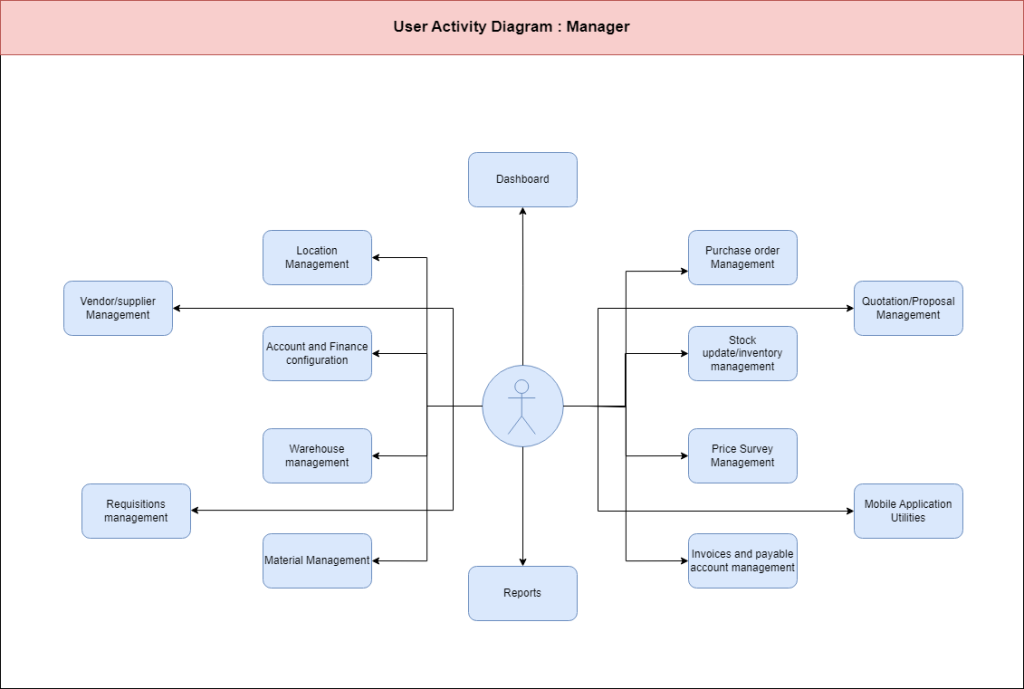
Figure 3
Payable Officer
Role(s): Records invoices and processes payments efficiently.
Responsibilities
- Receive and review invoices submitted by vendors for goods or services provided.
- Verify the accuracy and completeness of invoice details, including quantities, prices, and terms.
- Process payments promptly and accurately, ensuring adherence to payment schedules.
- Maintain records of invoices and payment transactions for audit and reconciliation purposes which integrate with Financial system.
- Communicate with vendors regarding payment status and resolve any billing discrepancies or issues.
Figure 4 depicts the Entity Module Map diagram of Payable Officer
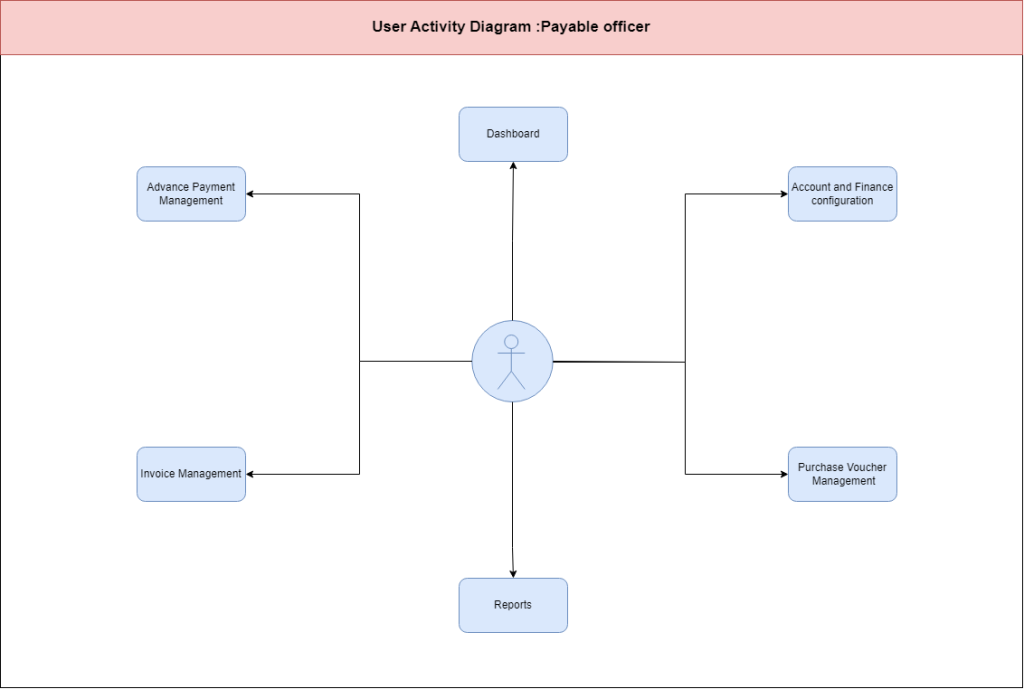
Figure 4
Vendor
Role(s): Can submit RFQ/RFP responses and invoices and manage delivery plans, ensuring efficient interaction and accurate data exchange.
Responsibilities
- Respond to requests for quotations (RFQs) and proposals (RFPs) from procurement officers.
- Provide accurate and competitive pricing for the requested goods or services.
- Coordinate with procurement officers regarding delivery schedules and logistics including delivery plan.
- Submit invoices promptly upon completion of goods or services delivery.
- Maintain open communication with the organization to address any questions or concerns regarding orders or payments.
Figure 5 depicts the Entity Module Map diagram of Vendor
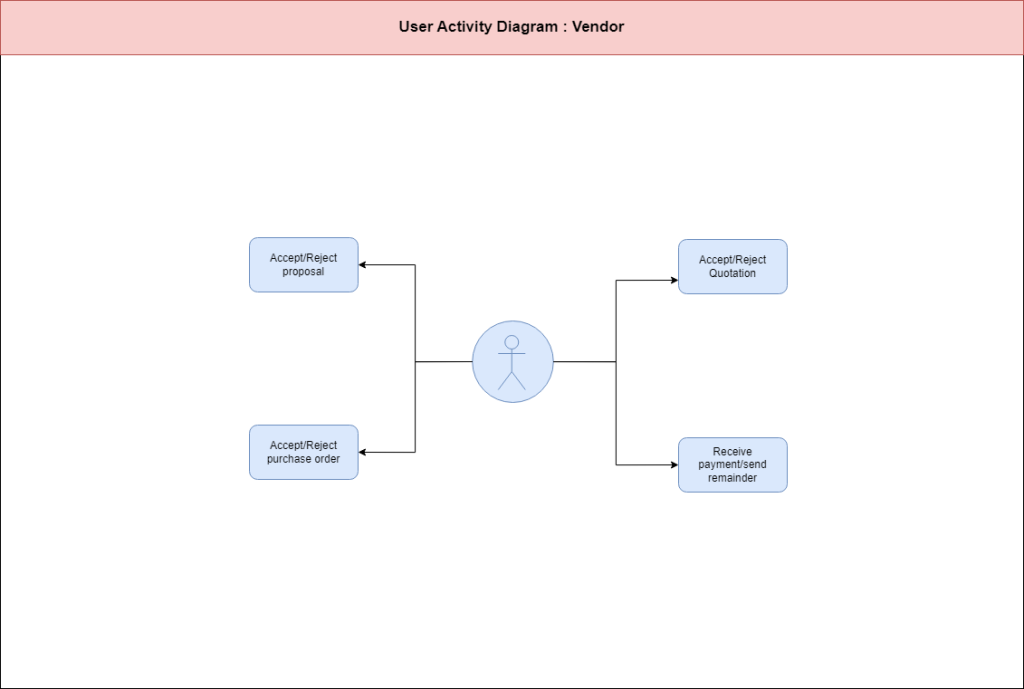
Figure 5